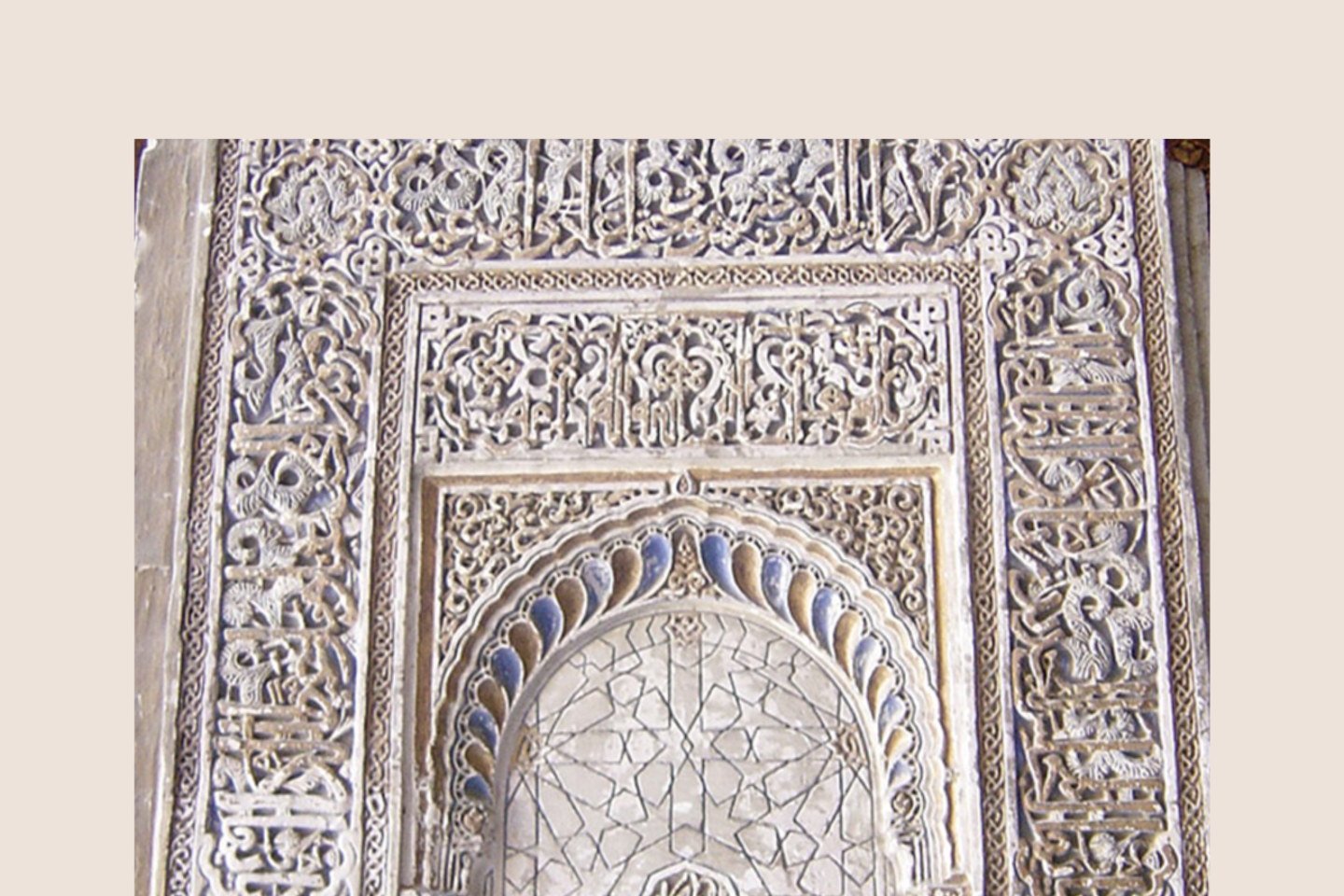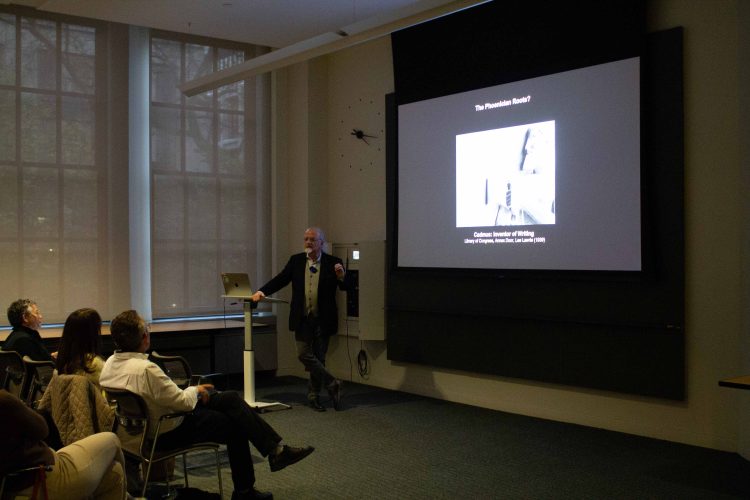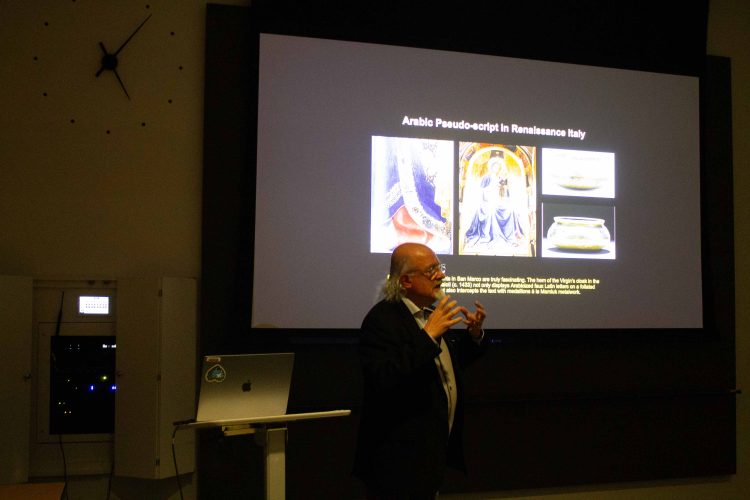
In a lecture of interest to students of Arabic and architecture alike, Dr. Rabbat gave a beautifully illustrated overview of the prominent role of Arabic inscriptions in Islamic architecture throughout the world over the centuries since the beginning of Islam. MIT’s Arabic language instruction program, which began in 2022 and has been expanding in scope and size since, hosted the event, and a large, enthusiastic cross-section of the MIT community attended.
On November 20th, 2024, in the Bush Room, Dr. Nasser Rabbat gave a lecture called “Visualizing Arabic: The Import of Inscriptions in Islamic Architecture.” Dr. Rabbat is the Aga Khan Professor and Director of the Aga Khan Program for Islamic Architecture at MIT. His most recent book is Taqiy al-Din al-Maqrizi: Wijdan al-Tarikh al-Masri (2024), an Arabic-language rewrite of his book Writing Egypt: Al-Maqrizi and His Historical Project (2023), on the life of the medieval Egyptian historian Al-Maqrizi. His research interests include urbanism, de-urbanism and the destruction of cities, and historiography.
Dr. Rabbat’s lecture was clear and detailed enough to communicate key concepts in Islamic architecture to those new to the field, while still providing new details and notes on currently ongoing research for those already familiar. His chronologically organized presentation began with the roots of the Arabic language, in order to discuss the very first Arabic stone inscriptions. These inscriptions and their successors became the principal conveyors of the Koran; study of the Koran made, and makes, the holy book’s visual appearance in Arabic culturally significant even to those who could not read Arabic themselves.
Calligraphic Koran inscriptions became a major motif in Islamic architecture, from the use of indented and protruding bricks to form words on medieval towers, to the beautifully carved mosques of the greater Islamic world, through the builders of Mughal India who accurately replicated Arabic text incomprehensible to them on their palaces. The gorgeously readable contemporary Museum of the Future in Dubai (2015) is a clear descendant of this tradition. Rabbat also discussed how texts other than the Koran eventually became used as inscriptions, such as in the Alhambra in Spain, in which each room contains poetic descriptions of itself, its views, and its uses. This even spread to other cultures, such as the pseudo-Arabic found in Italian Renaissance paintings by painters including Fra Angelico, who may not have even known that the motifs they copied were texts. Finally, Dr. Rabbat discussed new uses of Arabic calligraphy in art and in future building design, looking forward to a future in which new technology creates even more versatility and innovation in the use of words as parts of buildings.
Muna Bruce, Lecturer in Arabic at MIT Global Languages, introduced and hosted Dr. Rabbat’s lecture for a room-capacity audience of about forty. Arabic is a relatively new language at MIT, which began offering it in 2022; the response to this lecture from language students, architecture students, and community members alike demonstrates the multi-disciplinary engagement which both created the program and continue to produce its success.


